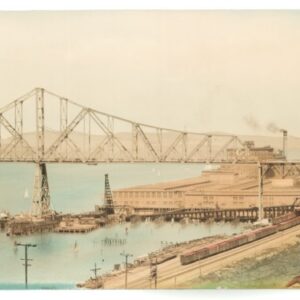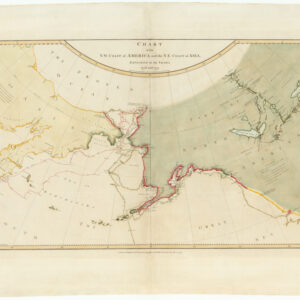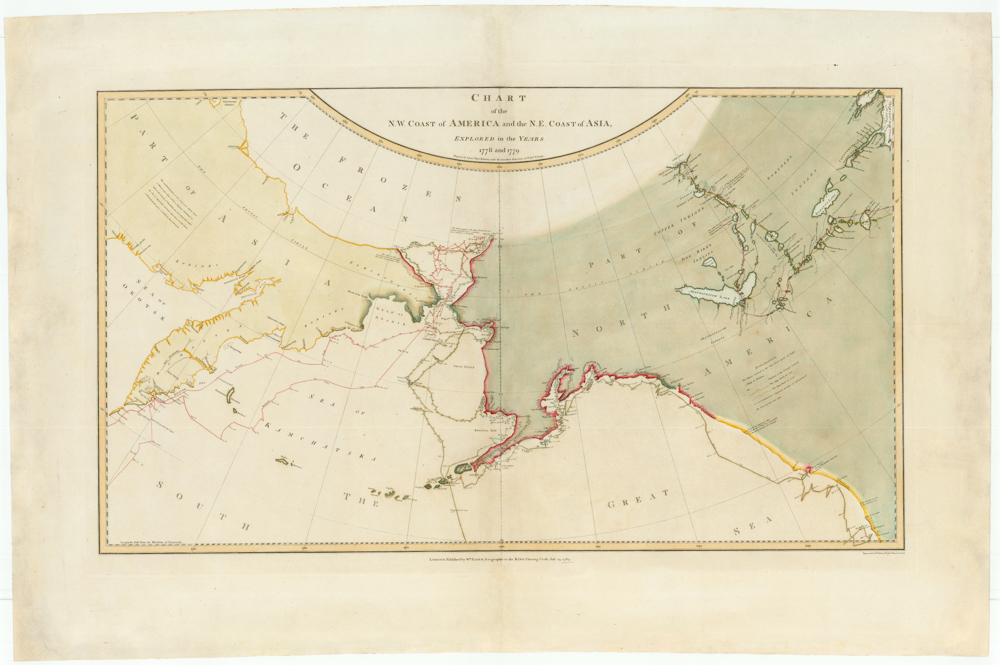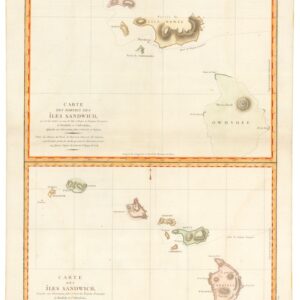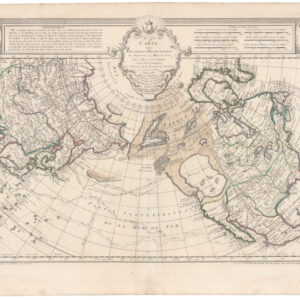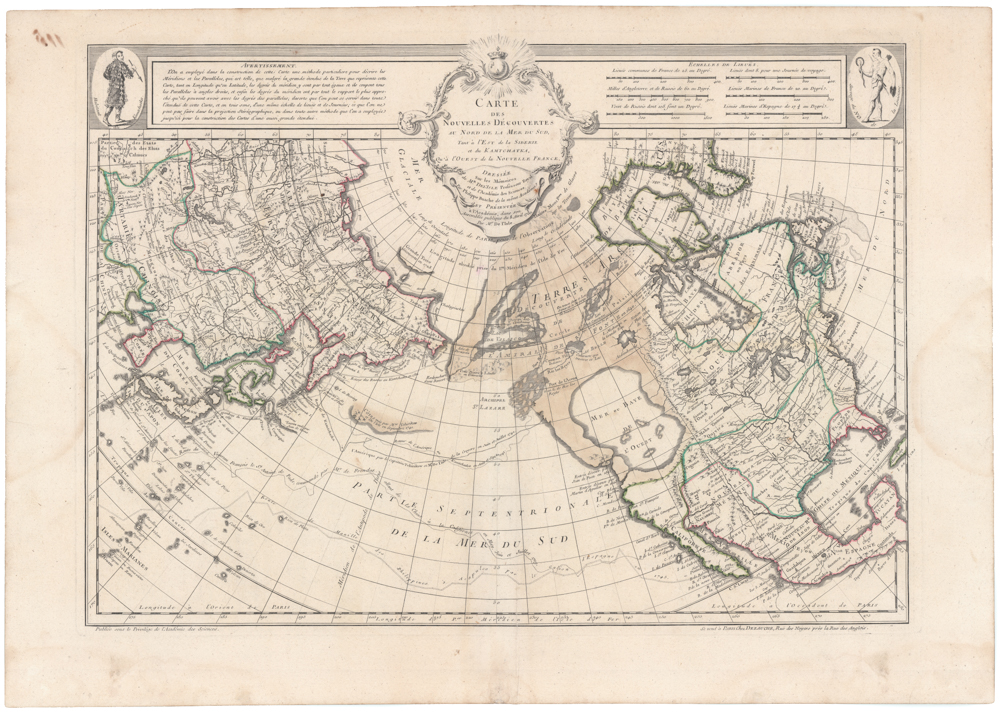Documenting the Privatization of Land in Hawaiʻi.
Hawaii Hawaiian Islands.
Out of stock
Description
This scarce and visually stunning 1901 map of the Big Island of Hawai’i was prepared by F. L. Lowell of the Hawaii Government Survey.
In visual terms, the map is defined by two competing facets: coloration indicating the land ownership type and contour lines converging at the peak of Mauna Loa near the island’s center. As for land ownership, yellow coloration denotes Crown Lands (belonging to the monarchy, deposed by this point), green is used for government lands, and private lands are left unshaded (as can be seen, much of the former Crown lands and the government land has been parceled out into tracts, leases, and homesteads).
Regions of the island are labeled with large text, while smaller text records the owner of the various private plots. Additional features are also noted, such as settlements, homesteads, roads, trails, recent lava flows, elevation of peaks, anchorages, and water holes.
The Great Māhele and the Hawaiian Government Survey
The Hawaiian Government Survey was a comprehensive land survey conducted in the Kingdom of Hawaii in the 19th century. It was initiated in the 1870s to create detailed maps and establish a standardized land ownership and taxation system. This followed the momentous Great Māhele in 1848, in which King Kamehameha III (r. 1825 – 1854) redistributed the kingdom’s land and classified it into Crown Lands, Government Lands, and Konohiki Lands, private lands held by chiefs (aliʻi nui) or commoners (kanaka).
Although intended to formalize property rights of Hawaiians, the concept of private real property was still novel to many of them, and the claim application process, defined by terms like patents, commutation, and liens, was complex enough that very few bothered. The result was that most land remained in the hands of the monarchy, the government, a relative handful of chiefs, or, increasingly with time, foreigners. When the monarchy was overthrown in 1893, Crown Lands became government lands, which were subject to sale when the government needed to raise funds. In this way, much of the former kingdom’s land became available for purchase, and foreign business interests gained control over most of the land in Hawaii by the late 19th century.
Census
This map is quite rare, with only two examples noted in the OCLC: at the University of Texas at Arlington and Brigham Young University (the University of California Santa Barbara may also hold an example, but the catalog listing is ambiguous). It appears to be the basis for a map (Rumsey 3705.001) of the same title (re)produced by the General Land Office for the 1906 Report of the Governor of the Territory of Hawaii to the Secretary of the Interior.
Cartographer(s):
Condition Description
Wear and toning along fold lines. Infill at some fold intersections.
References
